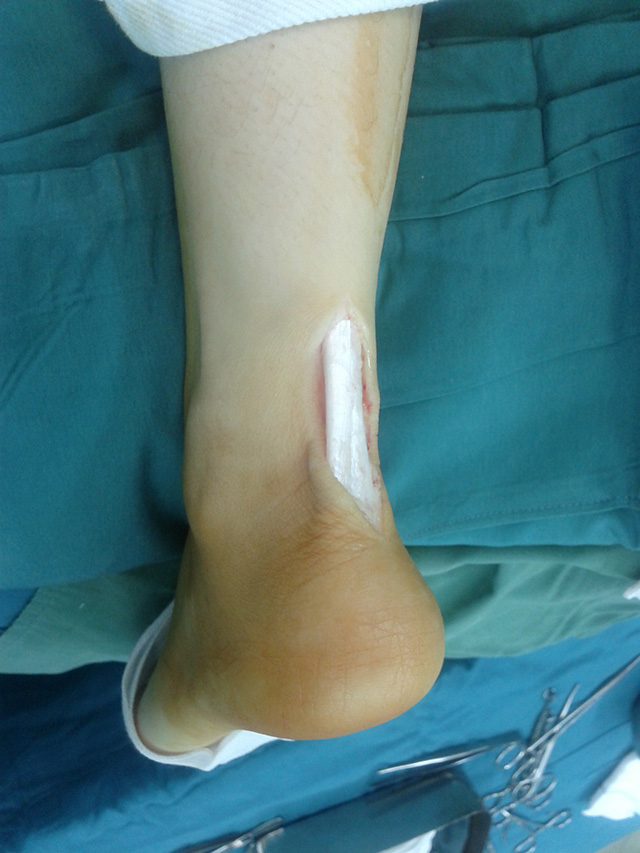There is very limited objective evidence based research on the specific benefits of sport of fitness activities. There are tons of anectodal testimonials of improvements ranging from: increased strength, to weight loss, body fat changes, increased speed, to better sleep and concentration.
There are several ongoing investigations desigend to better understand the impact of high intensity training programs. Here, we’ll consider those, as well as human physical performance in general.
Michael M. Smith, Allan J. Sommer, Brooke E. Starkoff, Steven T. Devor Affiliations
The purpose of this study was to examine the effects of a crossfit-based high intensity power training (HIPT) program on aerobic fitness and body composition. Healthy subjects of both genders (23 males, 20 females) spanning all levels of aerobic fitness and body composition completed 10 weeks of HIPT consisting of lifts such as the squat, deadlift, clean, snatch, and overhead press performed as quickly as possible. Additionally, this crossfit-based HIPT program included skill work for the improvement of traditional Olympic lifts and selected gymnastic exercises.
Bergeron MF, Nindl BC, Deuster PA, Baumgartner N, Kane SF, Kraemer WJ, Sexauer LR, Thompson WR, O'Connor FG.
A potential emerging problem associated with increasingly popularized extreme conditioning programs (ECPs) has been identified by the military and civilian communities. That is, there is an apparent disproportionate musculoskeletal injury risk from these demanding programs, particularly for novice participants, resulting in lost duty time, medical treatment, and extensive rehabilitation. This is a significant and costly concern for the military with regard to effectively maintaining operational readiness of the Force.
S. P. Flanagana, P. M. Vanderburgha, S. G. Borchersa & C. D. Kohstalla
The purpose of this investigation was to determine the effect of a combined strength and aerobic conditioning program on the ability of college-age women to perform the pull-up exercise and to identify the characteristics of women successful in performing a pull-up at the end of the program. Participants significantly increased upper body strength and fat-free mass and decreased fat mass and percentage of body fat. Participants successful at performing a pull-up had significantly greater 1 repetition maximum strength, strength to mass ratio, and strength to fat-free mass ratio. A two variable equation (% body fat and strength to fat-free mass ratio) was developed to predict which women would be successful at completing a pull-up at the end of a similar training program.
Anthropomorphics and Metrics
The average female adult height in the USA is about 5’ 4” and for males it’s about 5’9” CrossFit involves a lot of gymnastics and doesn’t favor a basketball or volleyball physique. Generally the most elite performers are in the average height range. What does that mean? If you are not in the average height range, you might be extra cautious in modifying your workouts.
In CrossFit, tall height is a mechanical disadvantage for nearly every movement except wallball shots, where it affords an advantage. It MAY be an advantage in other movements, ie box jumps, but in such instances, the benefit may be neutralized by body weight.
To truly be equitable, BMI (body mass index… ) would be factored into the CrossFit programming.
Body Mass Index
Using height and body weight to calculate weights for lifting makes sense.
Two people, both 5'10, one weighing 250 and one weighing 150, have vastly different
strength capacities as they consider doing the Rx weight.

BMI Categories:
As we age, our collagen loses its integrity. Joints get stiff, muscles aren’t as supple. Tone diminishes, our tissue is less elastic. For the science buffs, yes, your Youngs Modulus of Elasticity is time dependent. Changes in bone metabolism can lead to osteoporisis and brittleness. Changes in collagen synthesis can lead to tendon and ligament failure. Cartilage senescence leads to arthritis. In short,.things drop and fall apart as we get older. So while our minds want to do what we did when we were twenty-five, our bodies may say otherwise.
Study on effects of aging on bone.
comments powered by DisqusOur thanks to FlexBuilding: A New Way to Move. A New Way to Live. for providing the anatomical images for this website.
There are some movements that seem to be particularly associated with a higher risk injury. I will illustrate a couple here but we'll explore injuries and surgery more in detail in the Google+ community.
Case 1 - Elbow: Distal Biceps Tendon Rupture
The "skin the cat" movement on the rings has been a killer of some shoulders and elbows. In this gymnastic movement, you pull yourself through the rings and sort of 'flip over' to wind up in a position as if you were Iron Man flying back to earth.
Here's a ruptured biceps tendon I repaired after such a movement caused a "pop" in the elbow. Athlete was able to return to WOD with restrictions in 6 weeks and full workout at 4 months (though we generally recommend 6 months)
Injury caused by skin the cat:
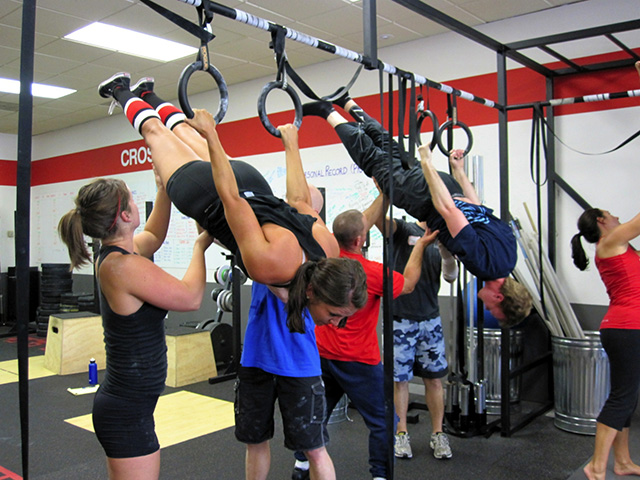
Before repair. Torn tendon
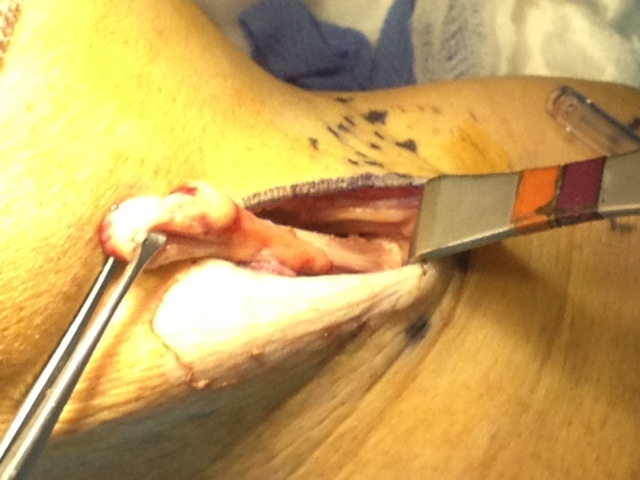
After re-attachment to bone:

Case 2 - Shoulder: Torn Latissimus Dorsi Tendon
The "muscle up" movement on the rings is explosive and requires powerful lats, among other things. In this gymnastic movement, you pull yourself from a hanging position and press up from a dip - to wind up with elbows fully extended.
Here's a ruptured latissimus tendon I repaired after such a movement caused a "pop" in the Shoulder. Athlete was able to return to WOD with restrictions in 12 weeks. Full work out capacity should be expected around 9 months.
Injury caused by muscle up:

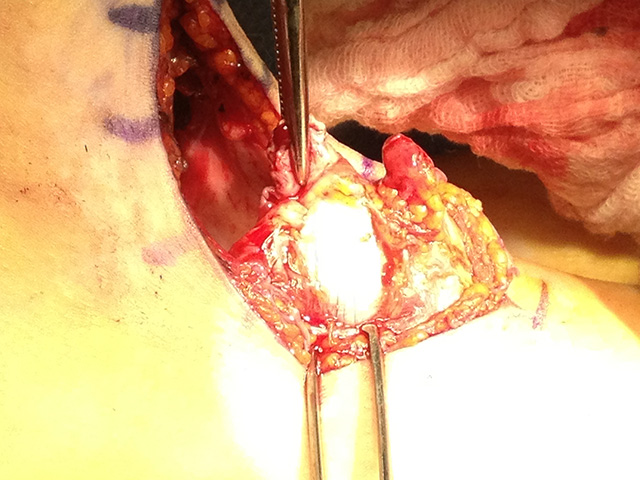
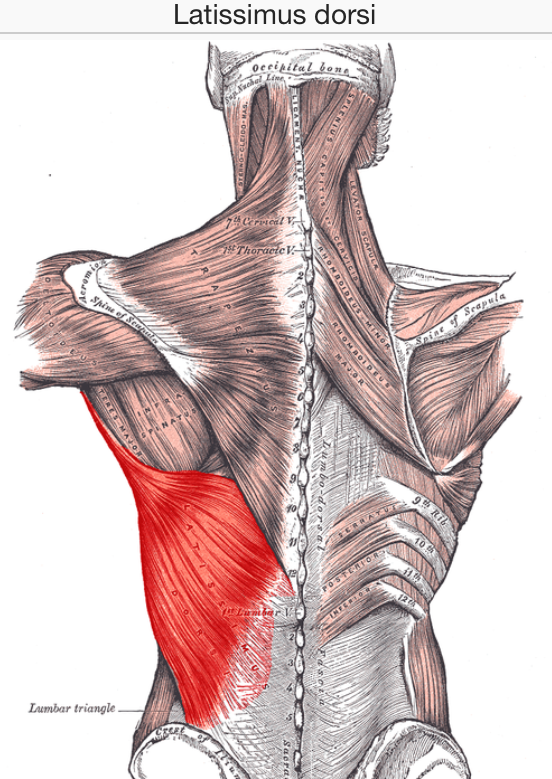
Case 3 - Ankle: Achilles Tendon Rupture.
This is a torn Achilles tendon I repaired after an athlete felt a ‘pop’ landing from a box jump. The Achilles tendon is the largest tendon about the ankle.It’s muscles from the Gastrosoleus complex (calf muscle) are linked to the heel bone (calcaneus) through the Achilles Tendon. It is vulnerable to pop with a sudden explosive contraction and may accompany a sudden change from elongation to contraction to elongation, as in jumping down off a box and jumping right back up on the box without a pause at the bottom. No tip on prevention other than stretch, stretch, stretch before and after exercise.
Shredded ruptured Achilles:
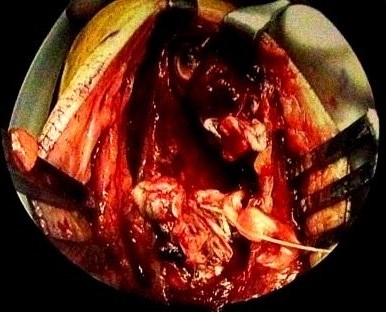
After repair through a 1.5 inch incision:

A normal Achilles tendon:
